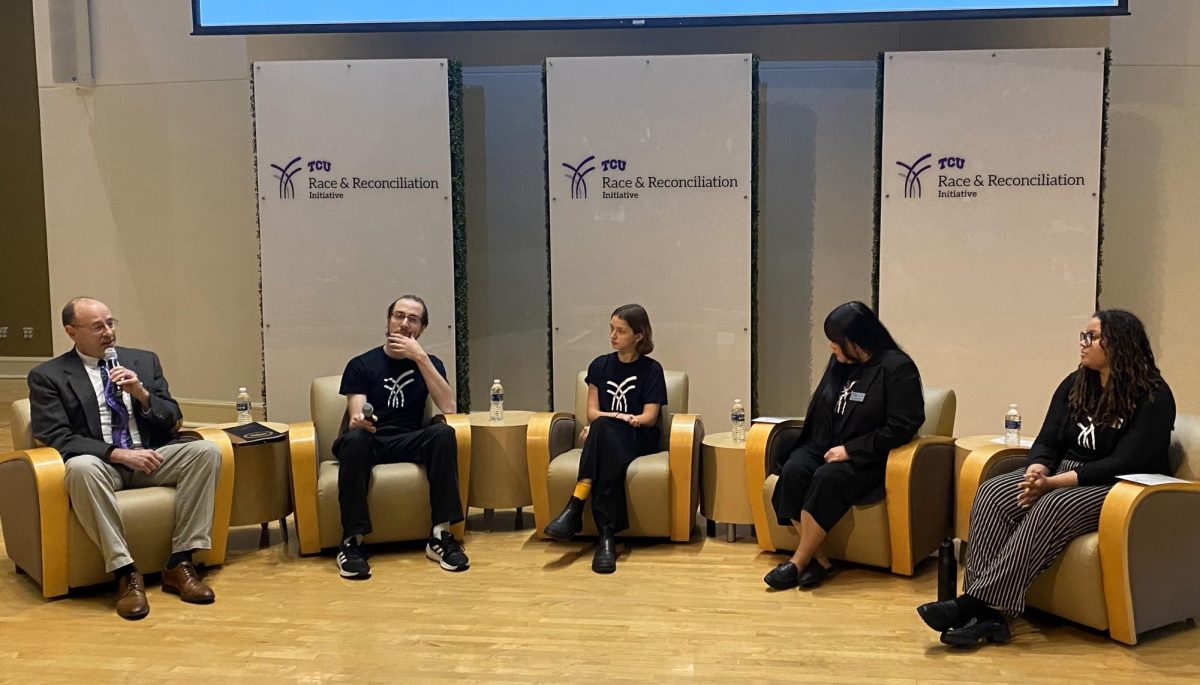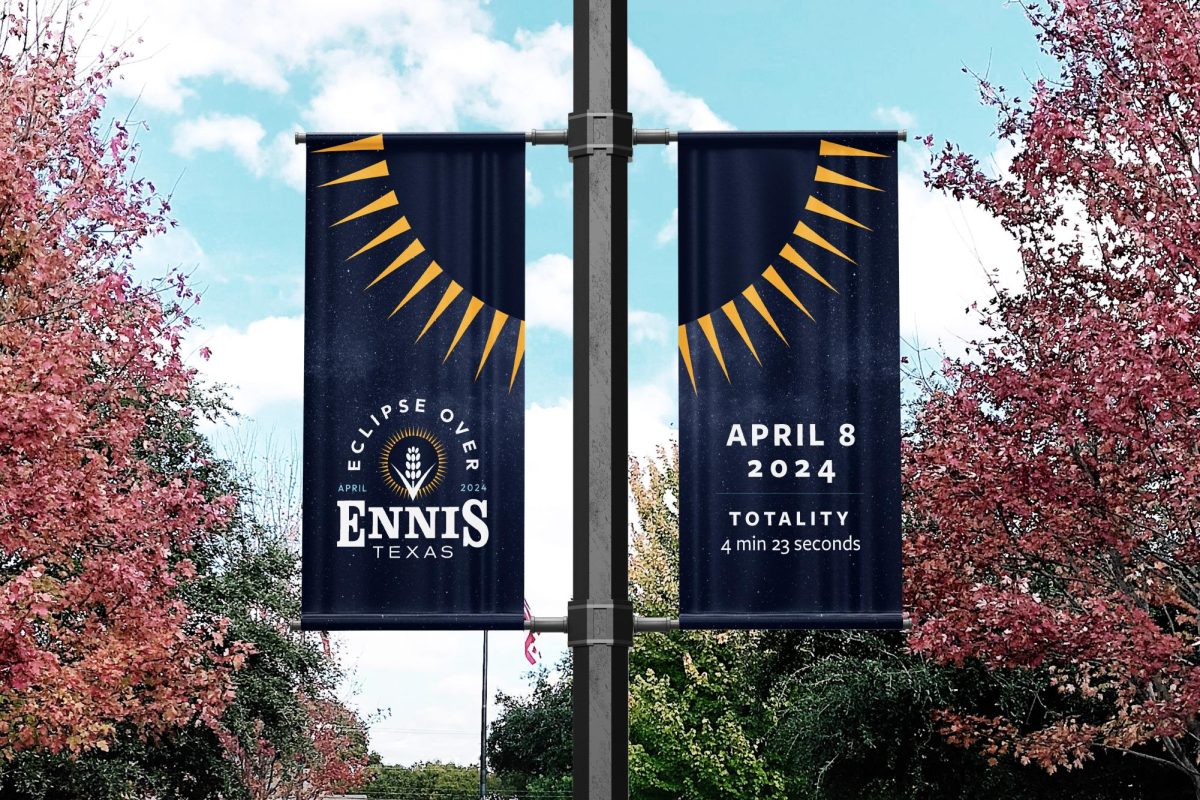Glenn Johnston spends most of his time in a single room, the walls of which are lined with more than 100 years of history – his history. At 100 years old, Johnston is one of the 109’s oldest residents.
About half his life has been spent in the 109, where he and his wife Betty moved into a garage apartment in 1947 before purchasing their house on Waits Avenue in 1955.
Johnston has seen a great deal of change. When he was born in 1910, the United States was an isolationist country and the Boy Scouts had just formed. Over his lifetime, Johnson has seen presidents most only get to read about in history books, plus two world wars and incredible amounts of social change.
Johnston’s adult life began when he enrolled in East Texas State Teachers College in Commerce in 1928. The college would later become East Texas State University, then Texas A&M University-Commerce.
He studied education and graduated with his teaching degree in 1932. During his time in college, he played both football and baseball and was inducted into the university’s Hall of Fame in 1990. He is currently the university’s oldest living former athlete.
But one of his fondest memories was a time when he and his friends went snipe hunting. At the time, Johnston was escorting another girl to the fictional snipe hunt, but there he met his very own snipe – Betty Snipe, that is, the woman who was destined to be his wife.
The two dated throughout college and married in 1933.
Like current college graduates, Johnson didn’t have much job security when he finished college in 1932 – he graduated in the middle of the Great Depression.
“They were bad times,” Johnson said. “Jobs were hard to get.”
Johnson submitted applications to every school within a 100-mile radius before he was accepted to teach shop and coach at an orphan school. He and Betty would have gotten married right after Glenn graduated college, but they didn’t have the money.
Instead he and Betty wrote to each other frequently while she was at home and he was finishing his college education, and eventually during his first year as a teacher. After Betty’s father, a grocer, died, the store closed and Betty couldn’t afford to return to college. She stayed at home with her mother and painted. Some of her paintings decorate Johnston’s home.
Johnston eventually switched jobs and worked in Fort Worth’s Post Office managing Air Transport of mail for the Army during World War II. The days were long, he said, but none of the workers minded because they weren’t on the front lines being shot at.
For a while, it looked as if he may be drafted, but the Army’s age limits were reset, so Johnston was spared for being too old to serve. He worked at the Post Office until he retired at the age of 60.
Johnston said he wanted to keep working, but the branch office was shutting down, so he retired rather than move out of Fort Worth. Johnston said wise investments have kept him in a good financial state during his 40-year retirement.
The Johnstons’ move to Waits Avenue was a lucky one. Betty had been out looking for a house and found one. She told the owner to not bother putting out the For Sale sign. They would take it. It was 1955 and this would be the last home they purchased.
The 109 has “always been a nice neighborhood,” Johnston said. “There was a time when you couldn’t park on the streets.”
His neighborhood is nestled against Texas Christian University, but when they bought the house, TCU didn’t have many students and those students didn’t have cars.
But the growth of the university has been the only major change in the area. The houses look the same, though painting the brick is the current trend. A protective neighborhood association keeps the university and commercial ventures from moving in too close to residential areas.
Greatest loss I’ve ever had.
After Betty died of pancreatic cancer in 2000, Johnston’s daughter Martha became more of a fixture in his life. The two danced at his 99th birthday party. Martha’s husband has taken to theming his birthday parties. At 99, he was introduced by “John Wayne.” His centennial featured a DVD showing pictures of his life and his history.
They also acted as secret shoppers, reviewing different restaurants and businesses. One of their assignments was to review a local bar. Johnston said even though he only ordered a Sprite, he was worried about his pastor finding him perched on a barstool.
He and Martha have even been on a cruise that took them the Bahamas, St. Thomas and Puerto Rico.
He’s had a hip replaced, but he takes very little medication.
Johnston’s room is a testament to his personal history. He spends most of him time here because of mobility problems resulting from his last hip surgery. He walked and lived independently until 99; now an in-house caretaker makes sure he has everything he needs.
The room is filled with photos of his family and college yearbooks. There is an award he earned at the age of 4 in a Charlie Chaplin look-alike contest. One wall holds a certificate on which President George W. Bush recognized him on Johnston’s 100th birthday.
He spends his time watching history programs or listening to big band music. He has a magnifier so he can read, but Johnston said he doesn’t like to watch the news.
Martha comes by once a week to visit.
The outer rooms, the piano room, kitchen and dining room are untouched by time. The man who used to exercise every day before work now spends his days confined to a single plush armchair.
So how can one person hope to live to 100? Johnston attributes is longevity to moderation. He never smoked, drank or ate more than he needed and would wake up early before work every day to condition his body.
“So many young people smoke and it’s just a shame because right on the pack, it says ‘don’t do this.’”
“I don’t know why I’m still alive,” Johnston said. “I’m not ready to go.”
He’s living proof that “it can be done.”





